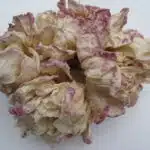Dog roses are a beautiful addition to any garden due to their delicate, pink flowers and the sweet fragrance they emit. These hardy plants, also known as Rosa canina, have been used for centuries as a source of food and medicine. Despite their numerous uses, dog roses are relatively easy to grow and care for.
If you are looking to add some charm to your garden with dog roses, this article will provide you with essential information on how to plant and maintain these lovely shrubs. As an expert in dog rose gardening, I am excited to share my knowledge and experience with you so that you can enjoy the beauty of these plants in your own backyard. Whether you are a seasoned gardener or a beginner enthusiast, this guide will equip you with everything you need to know about growing and caring for dog roses.
Understanding Dog Roses: An Overview
Dog roses, also known as Rosa canina, are a type of wild rose that is native to Europe and Asia. These shrubs are named after their historical use for treating rabies in dogs, although they are not actually poisonous to canines. The plant has a long history of medicinal use in various cultures, including the ancient Greeks and Romans.
In addition to its medicinal properties, the dog rose has also been used symbolically in art and literature throughout history. In Christian iconography, it is often associated with the Virgin Mary and is sometimes called the “rose of Sharon” or “Mary’s rose.” The flower has also been used as a symbol of love and beauty in poetry and literature.
When it comes to gardening, dog roses are relatively easy to care for. They prefer well-drained soil and full sun exposure but will tolerate partial shade. They are also hardy plants that can withstand cold temperatures and drought conditions. However, choosing the right location for your dog roses is crucial for their growth and overall health.
Choosing The Right Spot For Your Dog Roses
After understanding the wondrous beauty of dog roses, it is important to choose the right spot for them to grow and thrive. Sun exposure is a key factor in determining the growth of these plants. They need at least six hours of sunlight daily, so make sure to plant them in an area that gets enough light. However, if you live in an extremely hot region, it’s best to provide some shade during the hottest parts of the day.
Another essential aspect to consider when growing dog roses is soil acidity. These plants prefer a neutral pH level between 6.5 and 7.0. If your soil is too acidic, add lime to raise the pH level, or if too alkaline, add sulfur to lower it. A well-draining soil with good organic matter content will also help support their growth and prevent waterlogging.
Preparing the soil for planting dog roses can be done by digging a hole twice as wide as the root ball and filling it with compost or manure mixed with topsoil. Make sure the planting hole is deep enough so that its crown (where its roots meet its stem) sits slightly above ground level. Gently tamp down the soil around the root ball and water thoroughly after planting. By considering sun exposure and soil acidity levels while preparing your garden bed, you’ll create an ideal environment for your dog roses to flourish and bloom beautifully year after year.
Preparing The Soil For Planting
Before you start planting dog roses, it is essential to prepare the soil adequately. The quality of the soil plays a crucial role in the growth and development of the plant. Dog roses thrive in well-draining soils with high organic matter content. If your soil is heavy or clayey, it is advisable to amend it with compost or organic matter to improve drainage and nutrient levels.
One way to improve soil quality is by adding compost. Compost is a natural fertilizer that provides nutrients for the plants while improving soil structure and water retention capacity. You can make your compost using kitchen scraps, yard waste, and other organic materials. Alternatively, you can purchase compost from garden centers or nurseries. Spread a layer of compost over the planting area and mix it with the topsoil before planting your dog roses.
Another way to amend soil for growing dog roses is by adding manure. Manure is rich in nutrients and helps improve soil fertility, texture, and water absorption capacity. However, avoid fresh manure as it can burn young roots and attract unwanted pests like flies and rodents. Instead, use aged or composted manure that has been decomposed for several months. Apply a thin layer of manure over the planting area and mix it with the topsoil before planting your dog roses.
Now that you know how to prepare your soil for growing dog roses let’s move on to plant them correctly. Properly planting these beautiful flowers will ensure they thrive in their new environment!
Planting Dog Roses: Step-By-Step Guide
Choosing the best location for a dog rose is an important step, as it will ensure the rose receives enough sunlight and water for optimal growth. The soil should be well-drained, rich in organic matter and amended with fertilizer to ensure healthy growth. For planting, it is best to dig a hole slightly larger than the container the rose came in and place the rose in the hole at the same depth as it was in the container. After planting, it is important to water the dog rose thoroughly and mulch the soil around the base of the plant to conserve moisture.
Choose A Location
When it comes to planting dog roses, choosing the right location is crucial for their growth and survival. As a gardening expert, I cannot stress enough the importance of proper site preparation before planting. Dog roses thrive in areas with full sun exposure, so make sure to select a spot that gets at least six hours of direct sunlight each day.
Next, consider the soil quality of your chosen location. Dog roses prefer well-draining soil that is rich in nutrients. Before planting, it’s important to prepare the soil by removing any weeds or debris and adding organic matter like compost or manure to improve soil fertility. Fertilizing the soil prior to planting will also provide the necessary nutrients for healthy growth.
Lastly, it’s important to consider space and potential obstacles when selecting a spot for your dog rose bushes. Make sure there is enough room for them to grow and spread out without overcrowding other plants or structures nearby. Additionally, avoid planting near trees or shrubs that may compete with dog roses for nutrients and water. By taking these factors into account when choosing a location, you can set your dog roses up for success and enjoy beautiful blooms year after year.
Prepare The Soil
In order to ensure the healthy growth of dog roses, it is important to prepare the soil properly. As a dog rose gardening expert, I highly recommend enriching the soil before planting through the use of compost or manure. This will improve soil fertility and increase the availability of nutrients for plant uptake. Additionally, it is crucial to manage weeds in the area prior to planting.
To begin preparing the soil for dog roses, start by clearing the area of any debris or weeds. This can be done manually or through the use of herbicides. Afterward, add organic matter like compost or manure to enrich the soil and provide essential nutrients needed for healthy growth. It’s important to thoroughly mix these materials into the existing soil to ensure even distribution.
Lastly, fertilizing the soil prior to planting can further enhance plant growth and health. However, it’s important not to over-fertilize as this can lead to excessive vegetative growth at the expense of flower production. By taking these steps to prepare your soil before planting dog roses, you can help ensure their success and enjoy beautiful blooms year after year.
Plant The Dog Rose
When it comes to planting dog roses, it is important to choose the right breed of dog rose to match your garden’s specific conditions. Some breeds of dog roses thrive in well-drained soils with plenty of sunlight, while others prefer more moisture and shade. As a dog rose gardening expert, I highly recommend researching different breeds and selecting one that is best suited for your garden’s unique environment.
Once you have chosen the right breed of dog rose, it’s time to prepare the garden beds for planting. This involves ensuring that the soil is properly enriched with organic matter like compost or manure, as well as managing any weeds or debris in the area. It’s also important to ensure that there is adequate drainage in the garden beds, as waterlogged soil can lead to root rot and other issues.
When planting dog roses, it’s important to create a hole in the garden bed that is large enough to accommodate the plant’s root system. The hole should be deep enough so that the top of the root ball sits level with the ground surface. After placing the plant in the hole, backfill with soil and gently tamp down around the base of the plant. Finally, water thoroughly and add a layer of mulch around the base of the plant to help retain moisture and suppress weeds. By following these steps, you can help ensure successful growth and beautiful blooms from your dog roses year after year.
Watering And Fertilizing Dog Roses
When it comes to watering dog roses, it is important to find the right balance. Overwatering can lead to root rot and other fungal diseases, while underwatering can cause the plant to wilt and become stressed. The best watering techniques for dog roses involve deep watering once a week or twice a week during hot weather. Allow the soil to dry out slightly between waterings, but do not let it completely dry out.
In addition to proper watering, fertilizing your dog roses is key to their growth and overall health. Organic fertilizers are recommended for these plants as they are gentler on the environment and provide slow-release nutrients over time. Some great organic fertilizers for dog roses include compost, bone meal, and fish emulsion. Apply fertilizers in early spring before new growth appears and again in late summer or early fall.
By following these tips for watering and fertilizing your dog roses, you will be well on your way to growing healthy and vibrant plants that will bloom beautifully year after year. However, proper pruning is also essential for optimal growth, so be sure to read on for more information on how to prune your dog roses effectively.
Pruning Dog Roses For Optimal Growth
Watering and fertilizing are essential components of dog rose care, but pruning is equally important for optimal growth. Pruning involves cutting back stems and branches to promote new growth and improve the plant’s overall health. Ironically, many gardeners fail to prune their dog roses because they fear damaging the plant or removing too much foliage. However, neglecting to prune can result in a lackluster display of blooms and an unhealthy, overgrown plant.
Knowing when to prune your dog roses is key to successful pruning. The best time to prune is during the dormant season in late winter or early spring before new growth appears. This allows for easy identification of dead or damaged wood that needs to be removed. Different pruning techniques may also be used depending on the desired outcome for your plant. For example, pruning back one-third of last year’s stems will encourage new growth and more abundant blooms.
To properly prune your dog roses, you’ll need the right tools. A pair of sharp pruning shears is essential for making clean cuts without causing damage to the remaining stem or branch. Long-handled loppers may also be necessary for thicker branches that are difficult to cut with shears. It’s important to sanitize your tools before use by wiping them down with rubbing alcohol or a bleach solution to prevent the spread of disease.
Incorporating regular pruning into your dog rose care routine will not only improve the overall health of your plant but also result in more vibrant blooms come springtime. In the next section, we’ll discuss how to deal with pests and diseases that can threaten your beloved dog rose plants.
Dealing With Pests And Diseases
When it comes to growing and caring for dog roses, one of the biggest challenges is dealing with pests and diseases. These can cause significant damage to the plant, affecting its growth and overall health. However, there are various ways to address these issues.
One approach is to use natural remedies, which are gentler on the plant and the environment. For instance, you can make a homemade insecticide by mixing water with soap and vegetable oil. This solution can repel aphids, spider mites, and other common pests that attack dog roses. Additionally, you can introduce ladybugs or lacewings to your garden as they feed on many harmful insects. When it comes to diseases such as black spot or powdery mildew, you can use neem oil or a mixture of baking soda and water as a fungicide.
If natural remedies do not provide sufficient control over pests or diseases, chemical treatments may be necessary. However, it’s crucial to follow the instructions carefully and avoid using too much product as this can harm the plant or pollinators that visit it. Moreover, always wear appropriate protective equipment when applying chemicals and keep them out of reach of children and pets.
| Pest/Disease | Natural Remedies | Chemical Treatments |
|---|---|---|
| Aphids | Soap-water-oil | Insecticidal soap |
| Spider Mites | Ladybugs | Acaricides |
| Black Spot | Baking soda | Fungicides |
| Powdery Mildew | Neem oil | Sulfur-based sprays |
Moving forward with dog rose gardening means being vigilant in keeping an eye out for any signs of pests or diseases so that appropriate measures can be taken promptly. By employing both natural remedies and chemical treatments (when necessary), you can maintain a healthy garden while still being mindful of your impact on the environment.
When it comes to propagating dog roses, there are two main options: seeds or cuttings. Both methods have their advantages and challenges, so it’s essential to know what you’re getting into before starting.
Propagating Dog Roses: Seeds Or Cuttings?
To continue our discussion on dog roses, let us explore the best practices for propagating them. There are two primary methods to propagate these beautiful plants: seeds or cuttings. Each method comes with its own set of pros and cons.
Growing dog roses from seeds is a simple process that requires minimal effort. However, it may take several years before the plant produces flowers. On the other hand, growing dog roses from cuttings allows you to have an exact replica of the parent plant and provides quicker results. The downside is that it can be a more challenging process and requires more time and effort.
When propagating dog roses from seeds, begin by collecting ripe hips in autumn or early winter. Remove the seeds from inside the hip and place them in a container filled with damp peat moss or vermiculite. Keep the container in a cool, dry place until spring when they can be planted outdoors in well-draining soil. For cuttings, select healthy stems from the parent plant during late summer or early fall. Cut about six inches of stem and remove all but two sets of leaves at the top. Dip the cutting in rooting hormone and plant it in well-draining soil.
In summary, both seed propagation and cutting propagation offer their own advantages when growing dog roses. The best practice will depend on your preferences as well as your level of experience with gardening techniques. In our next section, we will discuss companion planting with dog roses to help you make informed decisions about how to care for these lovely plants alongside others in your garden space.
Companion Planting With Dog Roses
Having successfully propagated dog roses through seeds or cuttings, it’s now time to consider companion planting benefits for these beautiful plants. Companion planting is the practice of growing different types of plants together for mutual benefits such as pest control, soil improvement, and increased yield. When it comes to dog roses, there are several companion plants that can help improve their growth and overall health.
One of the best companion plants for dog roses is lavender. Not only does lavender repel pests like moths and fleas, but its fragrant blooms also attract pollinators like bees and butterflies which are essential for dog rose pollination. Additionally, lavender’s shallow roots help prevent soil erosion while its aromatic oils enhance the scent of nearby flowers.
Another great companion plant for dog roses is lady’s mantle. This herbaceous perennial not only provides a stunning backdrop with its delicate foliage and yellow-green flowers but also helps retain moisture in the soil which is crucial for maintaining healthy dog rose roots. Additionally, lady’s mantle has anti-inflammatory properties making it a great addition to any home-made remedies that utilize dog rose petals.
Incorporating companion planting into your garden can significantly benefit your dog roses’ growth and overall health. By selecting the right companion plants like lavender and lady’s mantle, you can improve your garden’s biodiversity while creating a beautiful space filled with visually appealing and beneficial plants. In the next section, we’ll explore how to use dog roses in cooking and medicine.
Using Dog Roses In Cooking And Medicine
Dog roses are not just beautiful flowers used for ornamental purposes, but they also have culinary and medicinal uses. In fact, their petals and hips are widely used in cooking and medicine due to their high nutritional value and medicinal properties. Dog rose petals have a delicate flavor and can be used fresh or dried in various recipes.
Here are some popular dog rose recipes that you can try at home:
- Dog rose petal jelly: This jelly is made from fresh dog rose petals, sugar, water, lemon juice, and pectin. It has a lovely pink color and a delicate floral taste that goes well with toast or scones.
- Dog rose hip tea: This tea is made by brewing dried dog rose hips in hot water. It is rich in vitamin C and antioxidants, making it an excellent immune booster.
- Dog rose syrup: This syrup is made by boiling dog rose hips, sugar, water, and lemon juice until the mixture thickens. It can be drizzled over ice cream or pancakes for a sweet treat.
Aside from their culinary uses, dog roses have long been known for their medicinal benefits. They are rich in antioxidants, flavonoids, carotenoids, vitamin C, vitamin E, and fatty acids that help boost the immune system and fight off diseases.
Some of the medicinal benefits of dog roses include:
- Boosting immunity
- Reducing inflammation
- Improving digestion
- Relieving menstrual cramps
Incorporating dog roses into your diet or using them as herbal remedies can bring numerous health benefits. However, it’s important to consult with a healthcare professional before using them as medicines to ensure safety and effectiveness.
Next up: let’s take a look at some common varieties of dog roses that you can grow in your garden.
Common Varieties Of Dog Roses
Dog roses are a beautiful addition to any garden, but they do require specific care to thrive. When it comes to growing and caring for dog roses, the first thing you need to consider is the variety of dog rose you want to grow. There are many different varieties of dog roses, each with their own unique needs and characteristics.
One thing that all dog rose varieties have in common is that they prefer well-draining soil that is rich in organic matter. The best soil types for dog roses are those that are slightly acidic with a pH between 5.5 and 7.0. It’s important to make sure the soil is not too compacted or heavy as this can cause drainage issues and result in root rot.
When planting dog roses, it’s important to choose a location that gets plenty of sunlight and has good air circulation. If you live in an area with hot summers, it’s best to plant your dog roses where they will receive some afternoon shade to protect them from sunburn. Once planted, be sure to water your dog roses regularly and fertilize them once or twice a year with a balanced fertilizer specifically formulated for flowering shrubs.
Moving on from the topic of common varieties of dog roses, let’s explore the fascinating world of dog roses in mythology and folklore. These beautiful blooms have been featured in stories and legends throughout history, often symbolizing love, passion, and beauty. From ancient Greece to medieval Europe, tales of the magical properties of these enchanting flowers continue to captivate us today.
Dog Roses In Mythology And Folklore
Dog roses, also known as wild roses, are not only appreciated for their beauty and fragrance but also hold a significant place in mythology and folklore. The mythical symbolism of dog roses varies among cultures, with some associating them with love and passion, while others associate them with death and rebirth. In ancient Greek mythology, dog roses were believed to have sprung from the blood of the god Adonis, who was killed by a boar. Similarly, in Norse mythology, it was believed that dog roses grew where the god Baldr’s blood fell after he was killed.
The cultural significance of dog roses is evident in their use in traditional medicine and cosmetics. Dog rose hips are used to make jam, tea, and syrup due to their high vitamin C content. They are also used in skincare products due to their antioxidant properties. In addition to this practical application, dog roses have been featured in various cultural works throughout history.
To better understand the cultural importance of dog roses, here are four examples:
- In Shakespeare’s play “Romeo and Juliet,” Romeo compares Juliet’s beauty to a white dog rose.
- In Bulgaria, there is a traditional dance called “Dog Rose” that represents the beauty of young girls.
- The English folk song “Scarborough Fair” references using rosemary and thyme alongside a “true love” picking a bunch of dog roses.
- In Japan, dog rose petals are used in tea ceremonies as they symbolize new beginnings.
Dog roses continue to be revered for their cultural significance and remain an essential part of gardening culture worldwide. In the subsequent section about ‘dog roses in art and literature,’ we will explore how these beautiful flowers have been portrayed throughout history.
Dog Roses In Art And Literature
Dog roses, also known as wild roses, are a popular symbol in art and literature, often representing beauty, innocence, and love. Dog roses are often used as a motif in paintings, sculptures, and other forms of visual art, and references to the flower have been found in literature and poetry since ancient times. Dog roses also have a variety of meanings in different cultures, including fertility and protection. When growing and caring for dog roses, it is important to provide plenty of sunlight and water, and to prune them regularly. Proper pruning of dog roses can help to ensure that they thrive and remain healthy. Additionally, dog roses should be fertilized regularly to maintain optimal growth. With proper care and maintenance, dog roses can be a beautiful addition to any garden.
Dog Rose Symbolism
Dog roses have a rich cultural significance, with many artists and writers finding inspiration in their beauty. This has led to the creation of numerous works of art and literature featuring dog roses, making them a popular symbol in various cultures. In poetry, dog roses are often used as a metaphor for love, with their delicate petals representing the fragility of human emotions.
The symbolism of dog roses also extends beyond love, with some cultures associating them with protection and healing. In ancient Greece, dog roses were believed to have protective powers that could ward off evil spirits. Meanwhile, Native Americans used dog rose tea to treat various ailments such as colds and fevers. These beliefs have contributed to the enduring popularity of dog roses in different parts of the world.
As a gardening expert, I recommend growing your own dog rose bushes to experience their beauty and cultural significance firsthand. With proper care and attention, these plants can thrive in your garden or yard. Whether you’re looking for a stunning addition to your landscape or hoping to create a space for quiet reflection inspired by their symbolism, dog roses are an excellent choice for any gardener.
Dog Rose Imagery
Dog roses have long been a source of inspiration for artists and writers, with their delicate beauty and rich symbolism making them a popular subject in art and literature. One of the most common ways in which dog roses are depicted is through imagery, with artists using their petals, thorns, and leaves to create stunning works of art. These images often draw on the symbolism associated with dog roses, such as love, protection, and healing.
Dog rose imagery has played an important role in shaping our understanding of these flowers and their cultural significance. In literature, for example, dog roses are often used as a symbol for human emotions such as love or sorrow. Meanwhile, in visual art, dog rose imagery can be found in everything from oil paintings to botanical illustrations. By exploring these depictions of dog roses through various mediums, we can gain a deeper appreciation for their beauty and meaning.
For those interested in incorporating dog roses into their own artwork or garden design, there are many resources available online and in print that offer inspiration and guidance. Whether you’re looking to create your own paintings or simply want to add some natural beauty to your yard or balcony, dog roses are an excellent choice. With their rich history and deep cultural significance, they offer endless possibilities for creativity and self-expression.
Dog Rose References In Art And Literature
Dog roses have been a popular subject in art and literature, with their delicate beauty and rich symbolism making them a source of inspiration for many artists and writers. One way in which dog roses are depicted is through imagery, where their petals, thorns, and leaves are used to create stunning works of art. These images often draw on the symbolic meanings associated with dog roses such as love, protection, and healing.
Dog rose imagery has played an important role in shaping our understanding of these flowers’ cultural significance. In literature, dog roses are often used as symbols for human emotions such as love or sorrow. Meanwhile, in visual art, dog rose imagery can be found in everything from oil paintings to botanical illustrations. By exploring these depictions of dog roses through various mediums, we can gain a deeper appreciation for their beauty and meaning.
For those interested in incorporating dog roses into their own artwork or garden design, there are many resources available online that offer inspiration and guidance. Dog rose gardening experts can provide tips on how to include these beautiful flowers into your garden design while retaining their symbolic meanings. Whether you’re looking to create your own paintings or simply want to add some natural beauty to your yard or balcony, dog roses are an excellent choice. With their rich history and deep cultural significance, they offer endless possibilities for creativity and self-expression while serving others by beautifying the environment around us.
Dog Roses In Modern Landscaping
Dog roses have been a beloved garden staple for centuries, and their popularity continues to rise with modern landscaping designs. As more people move into urban areas and seek out green spaces in their homes, dog roses offer a versatile and attractive option for small gardens. With proper care, they can thrive in a variety of settings and add beauty to any space.
One of the benefits of dog roses is their adaptability to different soil types and climates. They can grow in full sun or partial shade, and prefer well-draining soil with moderate moisture levels. In urban gardens where space is at a premium, dog roses can be grown in containers or trained up trellises to save space while still providing visual interest. Their vibrant blooms range from white to deep pink, making them an eye-catching addition to any garden design.
When incorporating dog roses into modern landscaping designs, it’s important to consider their growth patterns and maintenance needs. They can grow quite vigorously if left unchecked, so regular pruning is necessary to keep them under control. It’s also important to regularly water and fertilize them during the growing season to encourage healthy growth and flowering. With proper care and attention, dog roses can provide a stunning focal point for any garden.
As you embark on your dog rose gardening journey, there are many tips and tricks that can help ensure success. From choosing the right variety for your climate to providing adequate support as they grow, careful planning is crucial for creating a thriving garden. By following these guidelines and giving your dog roses the attention they need, you’ll be rewarded with beautiful blooms that bring joy year after year.
Tips And Tricks For Successful Dog Rose Gardening
Dog roses are an excellent addition to any garden, not just for their beauty but also for their medicinal properties. Did you know that the petals of dog roses contain more vitamin C than oranges? This fun fact highlights the importance of growing dog roses in your garden. To ensure a successful dog rose gardening experience, it is essential to follow these tips and tricks.
Container gardening is a great option for those who do not have enough space for planting dog roses directly into the ground. When choosing a container, make sure it has ample drainage holes and is large enough to accommodate the root system of your plant. Fill the container with nutrient-rich soil and give your plant plenty of sunlight and water to thrive.
Winter care is crucial for the survival of your dog rose plants. It is recommended to prune back the stems by one-third in late autumn to prevent damage from strong winds during winter. Covering the base of the plant with mulch or compost can also help insulate its roots from harsh weather conditions. Remember to keep an eye out for pests and diseases that may affect your plants during winter.
Successful dog rose gardening requires patience, dedication, and attention to detail. By following these simple tips and tricks such as container gardening and winter care, you can enjoy beautiful blooms year after year. So go ahead and add these wonderful plants to your garden today!
Conclusion
Dog roses are beautiful, hardy plants that have been a part of human culture for centuries. As a dog rose gardening expert, I can attest to the fact that these plants are fairly easy to grow and care for, provided you follow some basic guidelines.
When choosing a spot for your dog roses, make sure it receives plenty of sunlight and has well-draining soil. Prepare the soil by adding compost or other organic matter, and make sure it is free of weeds and other debris before planting. Follow our step-by-step guide for planting dog roses, which includes tips on spacing and depth.
Once planted, make sure to water your dog roses regularly and fertilize them every few weeks during the growing season. Dog roses have long been associated with mythology and folklore, as well as art and literature. They remain popular in modern landscaping due to their hardiness and beautiful blooms.
In conclusion, growing and caring for dog roses is a rewarding experience that anyone can enjoy. With proper preparation and care, these plants will thrive in your garden or landscape like a rose petal floating gracefully on the breeze.
Image Credits





























